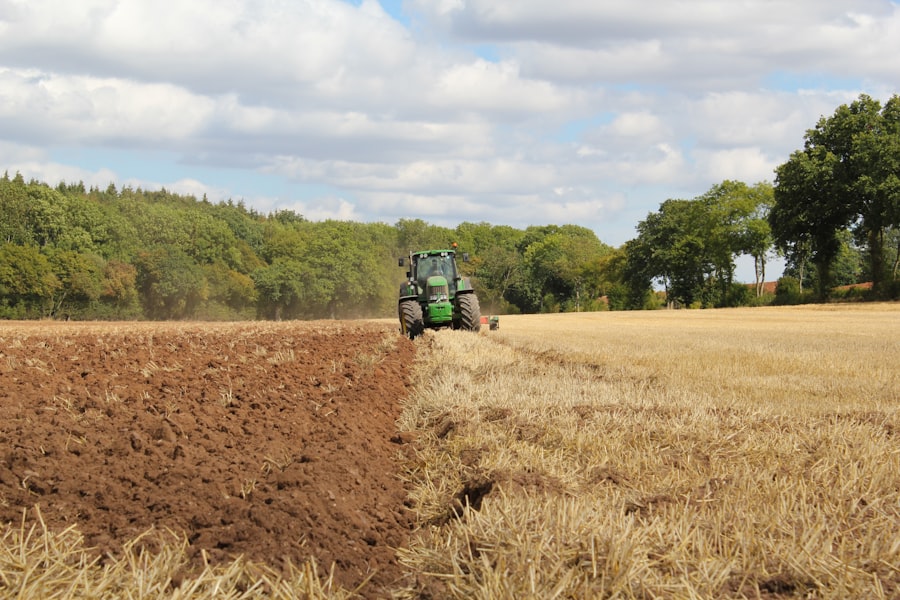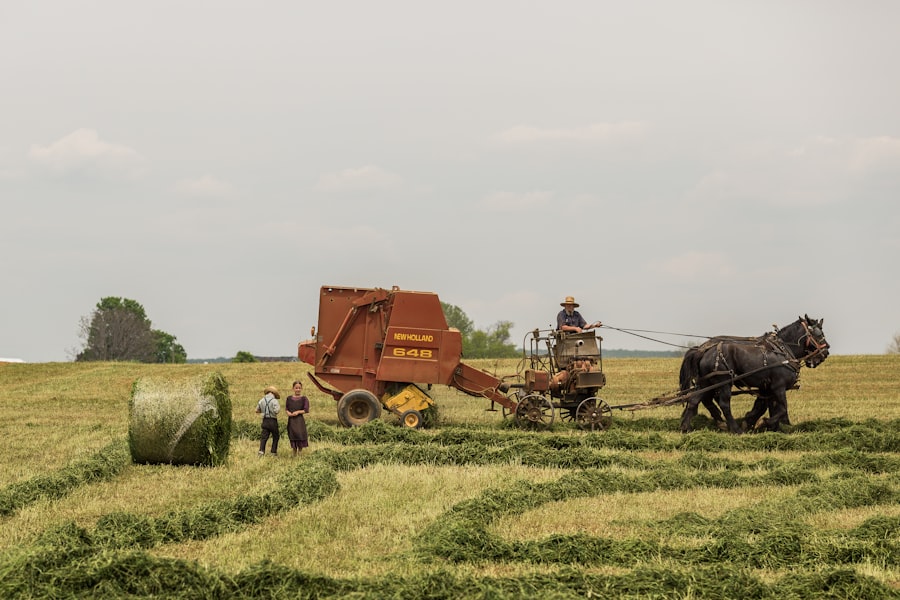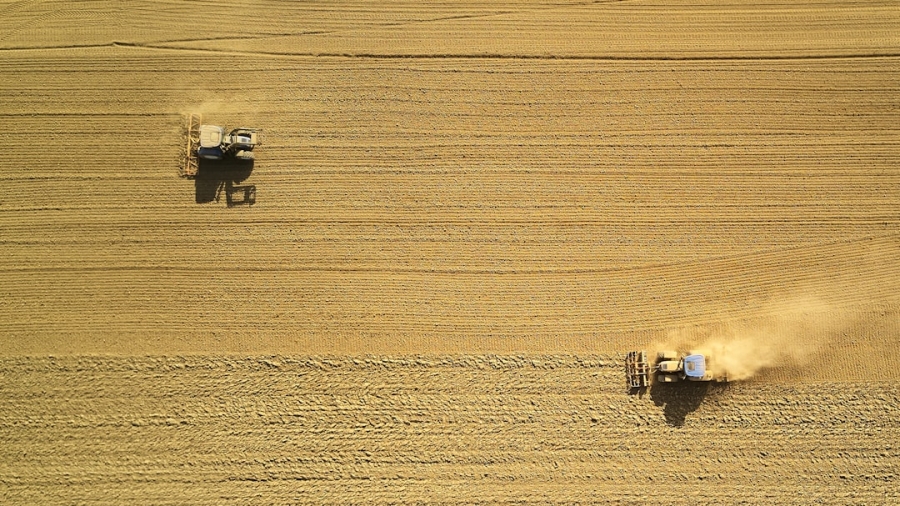The integration of artificial intelligence (AI) into agriculture marks a transformative shift in how farming practices are conducted, promising to enhance productivity and sustainability. As the global population continues to rise, the demand for food is escalating, necessitating innovative solutions to meet these challenges. AI technologies, including machine learning, computer vision, and data analytics, are being harnessed to optimize various agricultural processes.
This technological revolution is not merely about increasing crop yields; it encompasses a holistic approach to farming that includes resource management, pest control, and environmental sustainability. By leveraging vast amounts of data collected from various sources, AI can provide insights that were previously unattainable, enabling farmers to make informed decisions that can significantly impact their operations. Moreover, the adoption of AI in agriculture is not limited to large-scale operations; smallholder farmers are also beginning to benefit from these advancements.
With the proliferation of mobile technology and affordable sensors, even those with limited resources can access AI-driven tools that enhance their farming practices. This democratization of technology is crucial in developing regions where traditional farming methods have been the norm. As AI continues to evolve, it holds the potential to bridge the gap between modern agricultural techniques and traditional practices, fostering a new era of farming that is both efficient and sustainable.
The journey into AI in agriculture is just beginning, and its implications for food security and environmental stewardship are profound.
Key Takeaways
- AI in agriculture involves the use of advanced technologies to improve farming practices and increase productivity.
- AI plays a crucial role in crop management by analyzing data to optimize planting, irrigation, and pest control.
- Utilizing AI for yield predictions helps farmers make informed decisions about harvesting and marketing their crops.
- The benefits of AI in agriculture include increased efficiency, reduced resource wastage, and improved decision-making.
- Challenges and limitations of AI in agriculture include high initial costs, data privacy concerns, and the need for specialized technical skills.
The Role of AI in Crop Management
AI plays a pivotal role in crop management by providing farmers with tools that enhance their ability to monitor and manage their crops effectively. Through the use of drones equipped with advanced imaging technology, farmers can gather real-time data on crop health, soil conditions, and moisture levels. This information allows for precise interventions, such as targeted irrigation or fertilization, which can lead to improved crop quality and reduced waste.
Additionally, AI algorithms can analyze historical data alongside current conditions to identify patterns and predict future crop performance. This predictive capability enables farmers to make proactive decisions rather than reactive ones, ultimately leading to more efficient resource use and higher yields. Furthermore, AI-driven systems can assist in pest and disease management by analyzing data from various sources, including weather patterns and historical pest outbreaks.
Machine learning models can identify potential threats before they become widespread, allowing farmers to implement control measures in a timely manner. This not only protects the crops but also minimizes the use of pesticides, contributing to more sustainable farming practices. The integration of AI into crop management represents a significant advancement in agricultural science, as it empowers farmers with actionable insights that enhance their decision-making processes.
As these technologies continue to develop, the potential for increased efficiency and sustainability in crop management will only grow.
Utilizing AI for Yield Predictions

Yield prediction is a critical aspect of agricultural planning, and AI has emerged as a powerful tool in this domain. By analyzing a multitude of variables—such as weather conditions, soil health, crop variety, and historical yield data—AI algorithms can generate accurate forecasts of expected yields. This predictive capability is invaluable for farmers as it allows them to plan their planting schedules, manage resources more effectively, and make informed decisions about market strategies.
For instance, if a farmer knows that a particular crop is likely to yield well based on current conditions and historical data, they can allocate resources accordingly and optimize their supply chain logistics. Moreover, AI’s ability to process vast amounts of data quickly means that yield predictions can be updated in real-time as new information becomes available. This dynamic approach allows farmers to adapt their strategies on the fly, responding to changes in weather patterns or pest activity that could impact their harvests.
The integration of satellite imagery and remote sensing technologies further enhances the accuracy of these predictions by providing detailed insights into crop health and growth stages. As a result, farmers are better equipped to mitigate risks associated with unpredictable factors such as climate change or market fluctuations. The use of AI for yield predictions not only supports individual farmers but also contributes to broader agricultural resilience by ensuring that food production aligns more closely with demand.
Benefits of AI in Agriculture
The benefits of incorporating AI into agriculture are manifold and extend beyond mere productivity gains. One of the most significant advantages is the potential for increased efficiency in resource utilization. Traditional farming methods often involve blanket applications of water, fertilizers, and pesticides, which can lead to waste and environmental degradation.
In contrast, AI enables precision agriculture techniques that allow for targeted applications based on real-time data analysis. This not only conserves resources but also reduces costs for farmers while minimizing the ecological footprint of agricultural practices. Additionally, AI enhances decision-making processes by providing farmers with actionable insights derived from complex data sets.
With tools such as predictive analytics and machine learning models at their disposal, farmers can make informed choices about crop selection, planting schedules, and resource allocation. This level of informed decision-making leads to improved crop resilience against pests and diseases while optimizing overall farm management practices. Furthermore, the integration of AI fosters innovation within the agricultural sector by encouraging the development of new technologies and methodologies that can further enhance productivity and sustainability.
As these benefits become more widely recognized, the adoption of AI in agriculture is likely to accelerate, paving the way for a more efficient and sustainable food production system.
Challenges and Limitations of AI in Agriculture
Despite its numerous advantages, the implementation of AI in agriculture is not without challenges and limitations. One significant hurdle is the accessibility of technology for smallholder farmers who may lack the financial resources or technical expertise required to adopt advanced AI systems. While there are initiatives aimed at democratizing access to these technologies, disparities still exist between large agribusinesses and smaller farms.
This digital divide can exacerbate existing inequalities within the agricultural sector, leaving some farmers at a disadvantage when it comes to adopting innovative practices that could enhance their productivity. Moreover, the reliance on data-driven decision-making raises concerns about data privacy and security. As farmers increasingly utilize digital platforms to collect and analyze data about their operations, they may inadvertently expose themselves to risks associated with data breaches or misuse of information.
Additionally, there is a need for robust infrastructure to support the deployment of AI technologies in rural areas where internet connectivity may be limited or unreliable. Addressing these challenges requires collaborative efforts among governments, technology providers, and agricultural organizations to ensure that AI’s benefits are accessible to all stakeholders within the agricultural ecosystem.
Case Studies of Successful AI Implementation in Agriculture

Several case studies illustrate the successful implementation of AI technologies in agriculture across various contexts. One notable example is the use of AI-powered drones by a leading agricultural company in precision farming. By deploying drones equipped with multispectral cameras, the company was able to monitor crop health across thousands of acres in real-time.
The data collected allowed them to identify areas requiring immediate attention—such as irrigation or pest control—resulting in a significant increase in overall yield while reducing input costs by 20%. This case highlights how AI can transform traditional farming practices into data-driven operations that maximize efficiency. Another compelling case study involves a startup that developed an AI-based platform for smallholder farmers in developing countries.
The platform utilizes machine learning algorithms to analyze local weather patterns and soil conditions, providing tailored recommendations for planting schedules and crop management practices. Farmers using this platform reported an average yield increase of 30% within the first year of implementation. By empowering smallholder farmers with actionable insights derived from advanced analytics, this initiative demonstrates how AI can play a crucial role in enhancing food security and economic stability in vulnerable communities.
Future Trends and Developments in AI for Agriculture
Looking ahead, several trends are poised to shape the future landscape of AI in agriculture. One significant development is the increasing integration of Internet of Things (IoT) devices with AI systems. IoT sensors placed throughout fields can continuously collect data on soil moisture levels, temperature fluctuations, and other critical factors affecting crop growth.
When combined with AI analytics platforms, this real-time data can lead to even more precise decision-making processes that optimize resource use and improve overall farm management practices. Additionally, advancements in robotics are expected to play a crucial role in automating various agricultural tasks. From planting seeds to harvesting crops, robots equipped with AI capabilities can perform labor-intensive tasks more efficiently than human workers while minimizing physical strain on farmers.
As labor shortages become more prevalent in many regions due to demographic shifts and urbanization trends, robotic solutions will likely become increasingly vital for maintaining productivity levels within the agricultural sector. These developments signal an exciting future where AI not only enhances existing practices but also introduces entirely new methodologies that redefine how we approach food production.
The Potential of AI in Revolutionizing Agriculture
In conclusion, the potential of artificial intelligence to revolutionize agriculture is immense and multifaceted. By enhancing crop management practices, improving yield predictions, and promoting sustainable resource utilization, AI technologies are poised to address some of the most pressing challenges facing modern agriculture today. The benefits extend beyond individual farms; they encompass broader implications for food security and environmental sustainability on a global scale.
As we continue to explore innovative applications of AI within this sector, it is essential to ensure equitable access to these technologies so that all farmers—regardless of size or location—can reap the rewards. However, realizing this potential will require overcoming significant challenges related to accessibility, data privacy, and infrastructure development. Collaborative efforts among stakeholders—including governments, technology providers, and agricultural organizations—will be crucial in creating an inclusive environment where AI can thrive in agriculture.
As we look toward the future, it is clear that embracing artificial intelligence will not only enhance productivity but also foster resilience within our food systems as we navigate an increasingly complex global landscape. The journey toward an AI-driven agricultural future is just beginning; its success will depend on our collective commitment to innovation and sustainability in food production.
For those interested in the intersection of technology and agriculture, particularly in how AI can enhance crop management and yield predictions, it’s essential to stay informed about the broader technological landscape. While the specific focus on AI in agriculture is distinct, understanding advancements in related fields can provide valuable insights. For example, developments in AI and machine learning in other sectors can often be adapted for agricultural applications. A relevant article that discusses technological advancements, although not directly related to agriculture, can be found here: Unlock the Possibilities with Samsung Galaxy S22. This article explores the capabilities of the Samsung Galaxy S22, which includes enhanced processing power and AI features that could inspire similar innovations in agricultural technologies.
FAQs
What is AI in agriculture?
AI in agriculture refers to the use of artificial intelligence technologies such as machine learning, computer vision, and data analytics to improve various aspects of crop management, yield predictions, and overall farm operations.
How does AI enhance crop management in agriculture?
AI enhances crop management in agriculture by analyzing data from various sources such as satellite imagery, weather patterns, soil conditions, and crop health to provide insights and recommendations for optimized irrigation, fertilization, pest control, and harvesting schedules.
What are the benefits of using AI in agriculture?
The benefits of using AI in agriculture include improved crop yield predictions, reduced resource wastage through optimized use of water and fertilizers, early detection of crop diseases and pests, and overall increased efficiency in farm operations.
How does AI contribute to yield predictions in agriculture?
AI contributes to yield predictions in agriculture by analyzing historical and real-time data on factors such as weather patterns, soil conditions, crop health, and farming practices to generate accurate forecasts of crop yields, helping farmers make informed decisions.
What are some examples of AI applications in agriculture?
Some examples of AI applications in agriculture include automated crop monitoring using drones and sensors, precision agriculture tools for targeted spraying and irrigation, and predictive analytics for disease and pest management.

